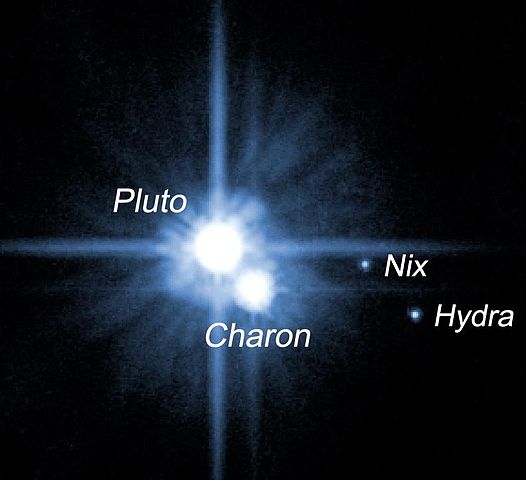
New observations derived from NASA’s Hubble Space Telescope shows two of Pluto’s moons, Nix and Hydra, are highly unpredictable and wobble in space, rather than rotate like our moon. The new information about Pluto and it’s moons were discovered \by Mark Showalter of the SETI Institute in Mountain View, California and Doug Hamilton of the Univ. of Maryland at College Park after they analyzed the Hubble’s findings.
“Hubble has provided a new view of Pluto and its moons revealing a cosmic dance with a chaotic rhythm,” said John Grunsfeld, associate https://carbomer.com/wp-content/uploads/2014/11/fossil-1.jpgistrator of NASA’s Science Mission Directorate in Washington. “When the New Horizons spacecraft flies through the Pluto system in July we’ll get a chance to see what these moons look like up close and personal.”
The two moons, Nix and Hydra, are said to wobble unpredictably because of their environment, which has them deeply embedded in a gravitational field which is constantly shifting. This constant shift is created by the double planet system in which they live. The double planet system is comprised of Pluto and Charon and these two planets whirl around each other.
The name, double planet, is such because Pluto and Charon share a common center of gravity located in the space between the two. Their variable gravitational field sends the smaller moons tumbling erratically. The effect is strengthened by the football-like, rather than spherical, shape of the moons. Scientists believe it’s likely Pluto’s other two moons, Kerberos and Styx, are in a similar situation.
Researchers say a combination of Hubble data monitoring and New Horizon’s brief close-up look, as well as future observations with NASA’s James Webb Space Telescope will help settle many mysteries of the Pluto system. No ground-based telescopes have yet been able to detect the smallest moons.
“Pluto will continue to surprise us when New Horizons flies past it in July,” Showalter said. “Our work with the Hubble telescope just gives us a foretaste of what’s in store.”
The scientist’s findings have been published in Nature.
Read the full article here from the NASA Goddard Space Flight Center on RDMag.
Source: NASA Goddard Space Flight Center


Leave a Reply